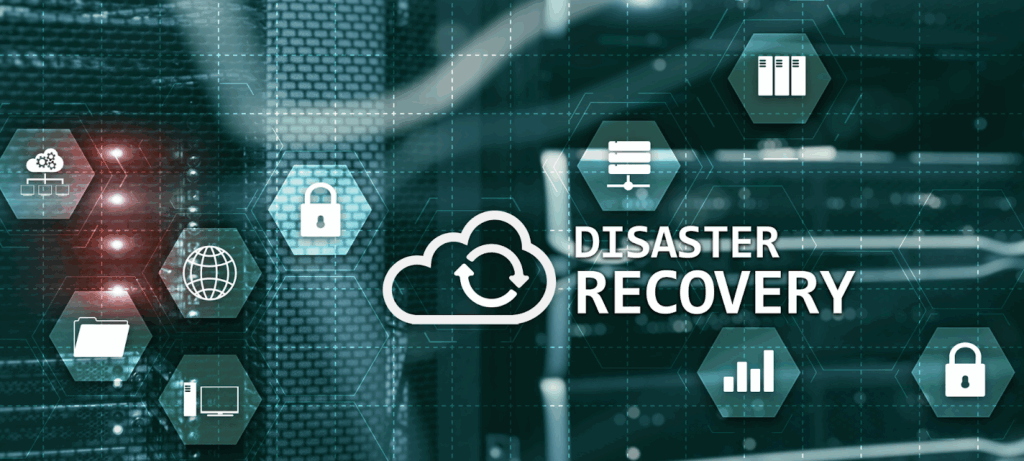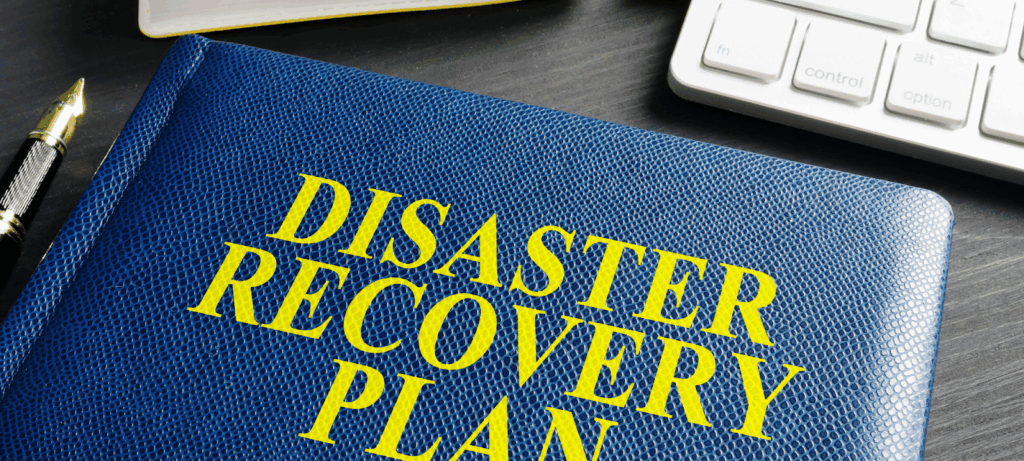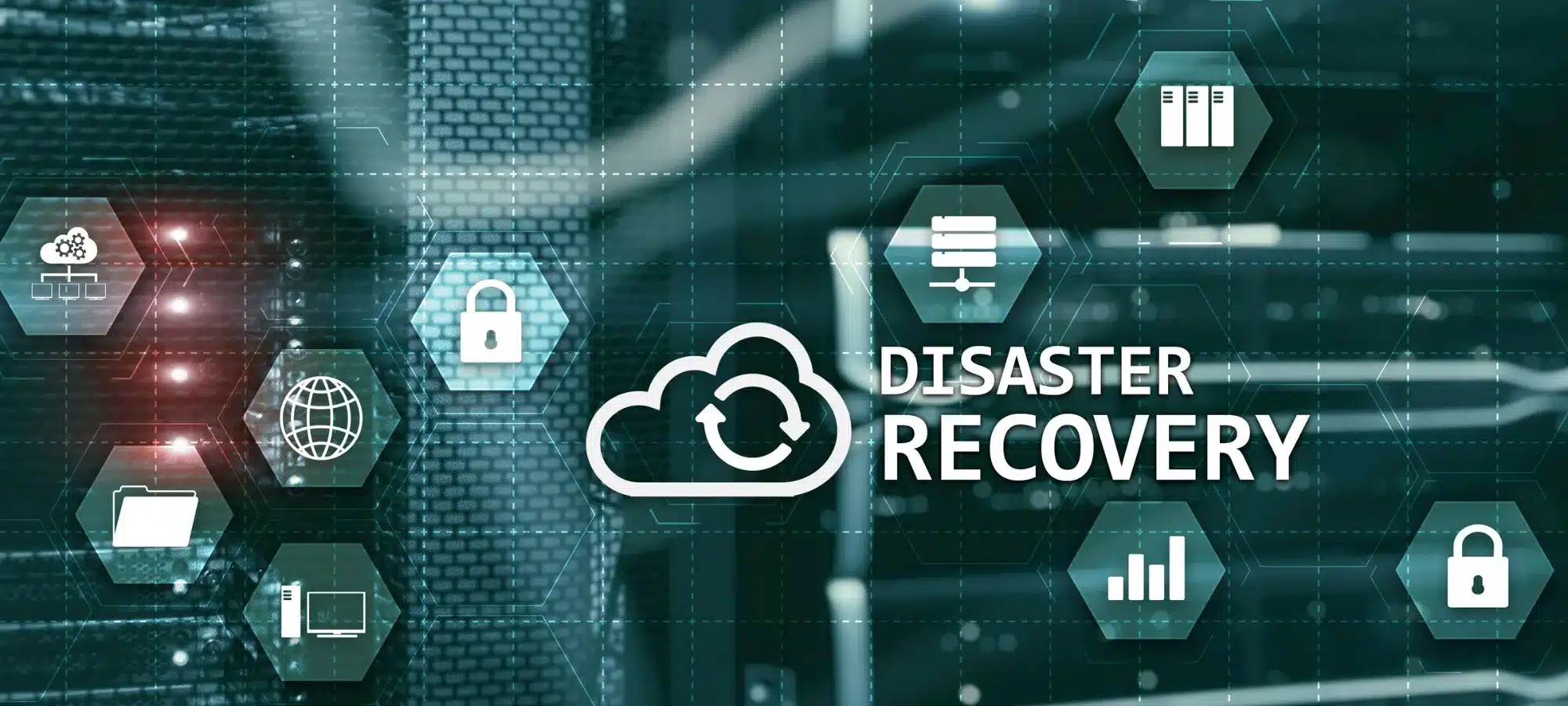
Disaster Recovery: Why It Matters for Business Continuity
In today’s digital-first economy, downtime is more than an inconvenience — it can directly impact revenue, reputation, and long-term customer trust.
From natural disasters to cyberattacks and human error, disruptions to IT systems are inevitable. What determines whether a business can withstand these events is the strength of its disaster recovery strategy.
Disaster recovery (DR) is the process of restoring critical systems, applications, and data after an unexpected outage or incident.
It is a cornerstone of broader business continuity planning, ensuring that organizations can resume normal operations quickly and minimize losses. A comprehensive DR plan encompasses application protection, data replication, and failover procedures as part of a robust disaster recovery framework.
Without a well-defined disaster recovery plan, companies risk prolonged downtime, data loss, and significant financial impact.
For small to mid-sized businesses (SMBs) and large enterprises alike, evaluating the right disaster recovery solutions—whether traditional DR or modern Disaster Recovery as a Service (DRaaS)—is essential for protecting business operations in a rapidly evolving threat landscape.
Traditional Disaster Recovery: How It Works
Traditional disaster recovery (DR) relies on physical infrastructure and dedicated resources to restore IT systems after an outage.
Typically, this involves maintaining a secondary data center or offsite facility equipped with servers, storage devices, and networking equipment to replicate the organization’s critical systems.
When disaster strikes, the IT team activates the disaster recovery plan, shifting operations to the backup environment.
This process often requires manual intervention, extensive testing, and ongoing maintenance to ensure systems remain aligned with production environments.
Managing a traditional DR environment demands significant internal resources for system maintenance, updates, security, and testing, making it resource-heavy and operationally intensive.
For many businesses, especially SMBs, these traditional backup systems are time-consuming, expensive, and difficult to scale as the entire IT infrastructure grows. While traditional DR provides complete control, it can also strain budgets and limit agility in fast-changing business environments.

Limitations of Traditional DR in Today’s IT Environment
While traditional disaster recovery has long been the standard approach, it presents several challenges in today’s cloud-driven and highly dynamic IT landscape.
Maintaining a secondary data center or offsite facility demands significant infrastructure costs, including hardware, storage, networking, and ongoing operational overhead. These expenses can be difficult for SMBs to justify, especially when systems sit idle until a disaster occurs.
Scalability is another limitation. As organizations grow, expanding traditional DR requires additional internal resources, hardware purchases, and manual configuration.
This makes it a time-consuming and often rigid approach. Furthermore, regular testing is required to ensure failover works correctly, yet many businesses struggle to dedicate the time and resources needed for comprehensive validation.
Traditional DR can also be slow to execute.
Recovery often involves manual processes, extended downtime, and lost revenue during outages. In contrast, modern businesses require faster recovery times and more agile disaster recovery solutions that adapt to remote teams, hybrid infrastructures, and evolving compliance demands.
What Is a DRaaS Solution?
Disaster Recovery as a Service (DRaaS) is a cloud-based solution that delivers full disaster recovery without maintaining a secondary data center.
Instead, a service provider replicates and hosts systems, applications, and data in the cloud. This ensures rapid restoration when disaster strikes.
Moreover, DRaaS goes beyond simple backups by offering full failover capabilities. During an outage, workloads automatically shift to the provider’s environment, allowing operations to continue with minimal disruption.
Unlike traditional disaster recovery, which requires heavy upfront investment, DRaaS offers a cost-effective, scalable cloud solution with lower total costs.
For both SMBs and large enterprises, DRaaS provides flexibility to grow, enabling rapid recovery, reduced infrastructure costs, and expert-managed restoration.

How DRaaS Works in Practice
A DRaaS solution leverages the cloud to replicate and protect an organization’s entire IT infrastructure in real time or near real time. When disaster strikes, workloads are redirected to the DRaaS provider’s environment, ensuring rapid failover and continuity of business operations.
Here’s how typical DRaaS work unfolds:
- Replication: Data, applications, and critical systems are continuously mirrored to the provider’s cloud environment using real time replication.
- Failover: If a disruption occurs, automated systems trigger an immediate failover, shifting operations to the cloud with minimal downtime.
- Testing: Unlike traditional DR, DRaaS allows for automated testing to validate recovery processes without disrupting day-to-day operations.
- Failback: Once the primary environment is restored, workloads are seamlessly transitioned back, ensuring full operational recovery.
Because the service is cloud-based, DRaaS offers scalability, flexibility, and faster recovery times compared to on-premises DR. Organizations can drastically reduce downtime, data loss, and reliance on manual intervention while maintaining compliance with industry regulations.

Choosing the Right DRaaS Provider
Selecting the right DRaaS provider is one of the most important decisions in building a reliable disaster recovery strategy. Not all services are created equal, and organizations must evaluate providers against their unique business needs, compliance requirements, and budget.
Key considerations when choosing a provider include:
- Service Level Agreements (SLAs): Look for clear guarantees around recovery time and recovery point objectives to ensure alignment with your disaster recovery plan.
- Compliance and Regulations: A strong DRaaS provider should support adherence to industry regulations like HIPAA, PCI DSS, or GDPR, depending on your sector.
- Scalability and Flexibility: The right DRaaS solution should grow with your business and adapt as your IT environment evolves.
- Cloud Storage Capabilities and Beyond: Evaluate the provider’s cloud storage capabilities, but also consider additional features such as security, compliance, and support to ensure a comprehensive solution.
- Testing and Reporting: Providers should offer regular testing and detailed reports to validate readiness and allow informed decisions.
- Support and Expertise: Evaluate whether the provider offers 24/7 support, specialized expertise, and proactive monitoring of your environment.
By thoroughly assessing these factors, businesses can identify the right DRaaS solution that not only safeguards critical systems but also delivers cost efficiency and peace of mind.

Backup as a Service vs. Disaster Recovery as a Service
It’s important to understand the distinction between backup as a service (BaaS) and disaster recovery as a service (DRaaS), since the two are often confused. Both protect business data, but they serve different purposes.
Backup as a service focuses on securely storing copies of data in the cloud.
In the event of data loss caused by human error, accidental deletion, or corruption, backups allow organizations to restore files and applications. However, this does not guarantee rapid recovery of entire systems or business operations.
In contrast, a DRaaS solution provides a full recovery environment.
Beyond just storing backups, DRaaS replicates entire systems, applications, and workloads. If disaster strikes, operations can fail over to the service provider’s cloud infrastructure, enabling businesses to restore operations quickly and minimize lost revenue.
While both services are valuable, DRaaS delivers a more comprehensive approach, ensuring business continuity by protecting not just data, but the functionality of critical systems needed for normal operations.
Cost Efficiency: Comparing DRaaS and Traditional DR
One of the biggest differences between traditional disaster recovery and DRaaS solutions lies in cost structure.
Traditional DR requires heavy upfront investment in infrastructure, including secondary data centers, servers, storage, and networking hardware. These assets must be maintained, tested, and periodically upgraded, creating significant ongoing maintenance and operational costs.
A DRaaS provider, on the other hand, offers a cost efficient solution by leveraging cloud resources.
Instead of paying for idle hardware, businesses pay for services on a subscription basis, scaling as their needs change. This resource optimization allows organizations to reduce infrastructure costs, avoid excessive operational overhead, and free up their IT team for higher-value tasks.
Additionally, DRaaS minimizes lost revenue during outages by enabling faster recovery and reducing downtime. For SMBs, this combination of lower upfront investment, predictable billing, and greater agility makes DRaaS a financially compelling option compared to traditional DR approaches.

Faster Recovery Times with Cloud-Based DRaaS
In the event of an outage, the ability to resume normal operations quickly is critical to minimizing lost revenue and customer disruption. Traditional DR often involves manual processes, physical failover, and time-consuming recovery steps that can stretch recovery time into hours or even days.
A cloud-based DRaaS solution, however, enables faster recovery times through automation and real-time replication.
As you go through the recovery process with DRaaS, automation and seamless failover make implementation straightforward and efficient.
With automated failover, workloads can be seamlessly transitioned to the service provider’s infrastructure, allowing businesses to drastically reduce downtime.
Recovery point objectives (RPOs) and recovery time objectives (RTOs) can also be more easily defined and achieved with DRaaS compared to traditional approaches.
This ability to restore operations quickly makes DRaaS particularly valuable for SMBs and industries with critical systems that cannot afford prolonged downtime.
By leveraging cloud infrastructure, organizations ensure that business continuity is maintained even during unexpected disruptions.

Meeting Industry Regulations and Compliance Standards
Regulatory compliance is a critical driver for many organizations when selecting a disaster recovery solution.
Industries such as finance, healthcare, and government must adhere to strict industry regulations regarding data protection, availability, and privacy. Noncompliance can result in steep fines, reputational damage, and loss of customer trust.
A DRaaS provider can help businesses meet these requirements by offering cloud-based solutions with built-in compliance features.
Many providers design their platforms to support frameworks such as HIPAA, PCI DSS, GDPR, and other sector-specific standards.
Features like automated testing, detailed reporting, and documented service level agreements (SLAs) make it easier for organizations to demonstrate compliance during audits.
In contrast, traditional disaster recovery often places the burden of compliance on the business itself, requiring significant internal resources and expertise to align with evolving requirements.
With a DRaaS solution, organizations benefit from shared responsibility, streamlined compliance processes, and greater confidence in their ability to safeguard sensitive data.

Disaster Recovery Plan Considerations for SMBs and Enterprises
Building a reliable disaster recovery plan requires careful evaluation of organizational needs, resources, and risks.
For small and mid-sized businesses (SMBs), limited budgets and IT staff can make traditional disaster recovery impractical. Instead, cloud-based DRaaS solutions offer scalability and affordability while reducing dependence on large in-house teams.
Enterprises, on the other hand, may already have established disaster recovery infrastructure, but face challenges in maintaining and testing these systems across a global footprint.
Remote teams, hybrid environments, and diverse compliance obligations create added complexity. In these cases, DRaaS provides a flexible model that complements or replaces existing systems with centralized management and real-time replication.
Regardless of company size, organizations must weigh factors like service level agreements, testing frequency, recovery objectives, and cost efficiency when evaluating options.
A well-structured recovery plan aligned with the right DRaaS provider ensures resilience, minimizes downtime, and supports long-term business continuity as the organization evolves.
Disaster Recovery DR vs. DRaaS: Key Differences at a Glance
The key difference between traditional disaster recovery (DR) and Disaster Recovery as a Service (DRaaS) lies in cost, agility, and operational efficiency.
- Infrastructure: Traditional DR requires physical facilities, dedicated hardware, and high infrastructure costs. DRaaS leverages the cloud, eliminating the need for secondary data centers.
- Scalability: Expanding traditional DR is time consuming and resource-intensive. Cloud-based DRaaS scales on demand, adapting as the business grows.
- Recovery Process: Traditional DR relies heavily on manual steps, resulting in longer recovery times. DRaaS enables automated failover and faster recovery.
- Compliance: With traditional DR, compliance management falls largely on the business. DRaaS providers often build in compliance features and regular testing to support industry regulations.
- Costs: Traditional DR involves high operational overhead and ongoing maintenance. DRaaS offers a more cost efficient solution with predictable subscription pricing.
For many organizations, these differences highlight why DRaaS is becoming the preferred choice for ensuring business continuity and minimizing data loss during disasters.

Building a Future-Ready Disaster Recovery Strategy
A managed service provider (MSP) plays a vital role in helping businesses meet regulatory requirements and improve compliance.
Instead of relying only on in-house resources, organizations now leverage MSPs for expertise, advanced tools, and proactive support.
Additionally, MSPs deliver ongoing compliance management, including monitoring, risk assessments, and early identification of potential compliance gaps.
To guide these efforts, MSPs establish adaptable compliance frameworks aligned with evolving regulations and security demands.
With advanced tools, MSPs automate compliance workflows, reducing manual effort while ensuring businesses remain aligned with changing regulations.
Moreover, many MSPs support frameworks like HIPAA, GDPR, and CCPA, helping organizations avoid penalties without managing every detail manually.
MSP compliance strengthens regulatory adherence, mitigates risks, and builds client trust by demonstrating operational maturity and proactive security practices.
By implementing strict security controls, encryption, and access policies, MSPs also enhance data protection, a key compliance requirement.
Finally, MSPs provide audit readiness support, ensuring systems and documentation are prepared when inspections or certifications are due.
While traditional disaster recovery has played an important role for decades, its costs, complexity, and slow recovery processes often fall short of modern requirements.
A DRaaS solution offers a more adaptable, cost-efficient, and scalable approach.
With features like real-time replication, automated failover, and built-in compliance, DRaaS enables organizations to drastically reduce downtime and maintain business continuity even when disaster strikes.
For SMBs and enterprises alike, working with the right service provider ensures that critical systems are protected and normal operations can be restored without unnecessary disruption.
By shifting from resource-intensive legacy systems to cloud-based DRaaS, businesses can future-proof their recovery plan, reduce risk, and strengthen resilience against the full spectrum of threats — from natural disasters to cyberattacks.
Strengthen Your Disaster Recovery Strategy with IMS Cloud Services
When disaster strikes, every second counts. Choosing the right disaster recovery solution is critical to protecting your business, reducing downtime, and ensuring long-term business continuity.
IMS Cloud Services helps organizations evaluate their needs, select the right DRaaS provider, and implement a scalable recovery plan that safeguards critical systems and supports compliance with industry regulations.



Over 25 years of expertise in disaster recovery, backup, and security — partnering with your IT team to keep your business running.